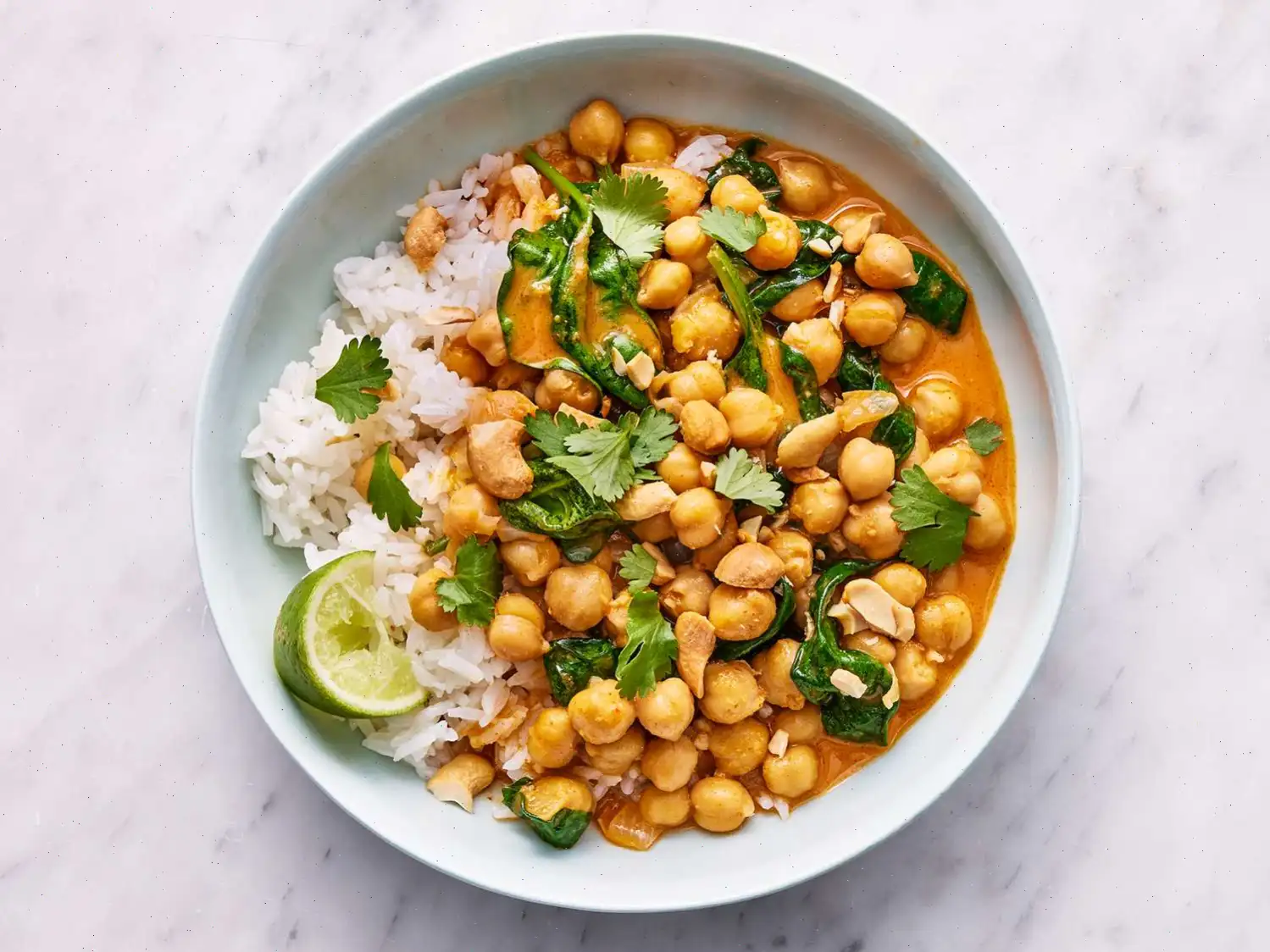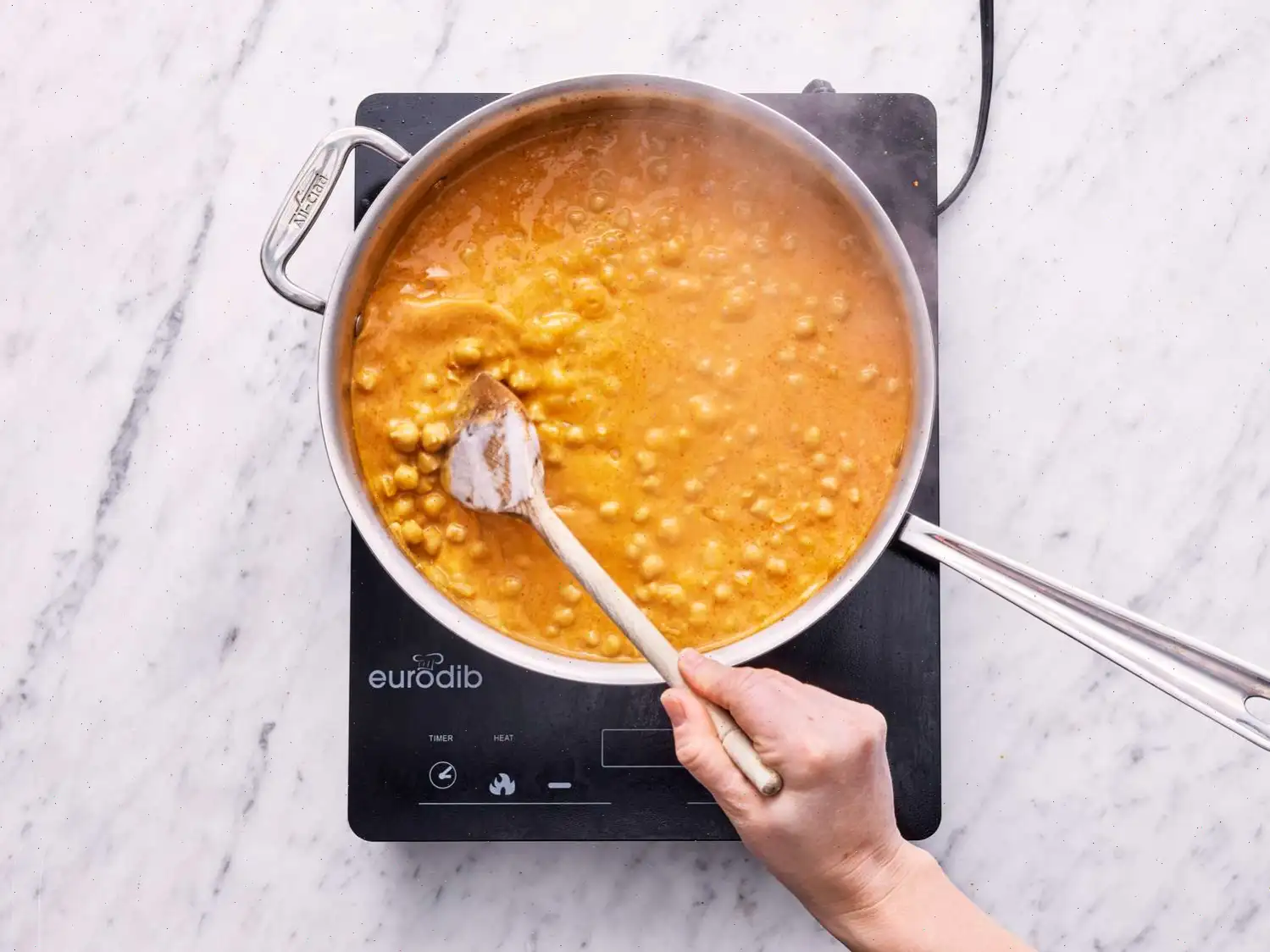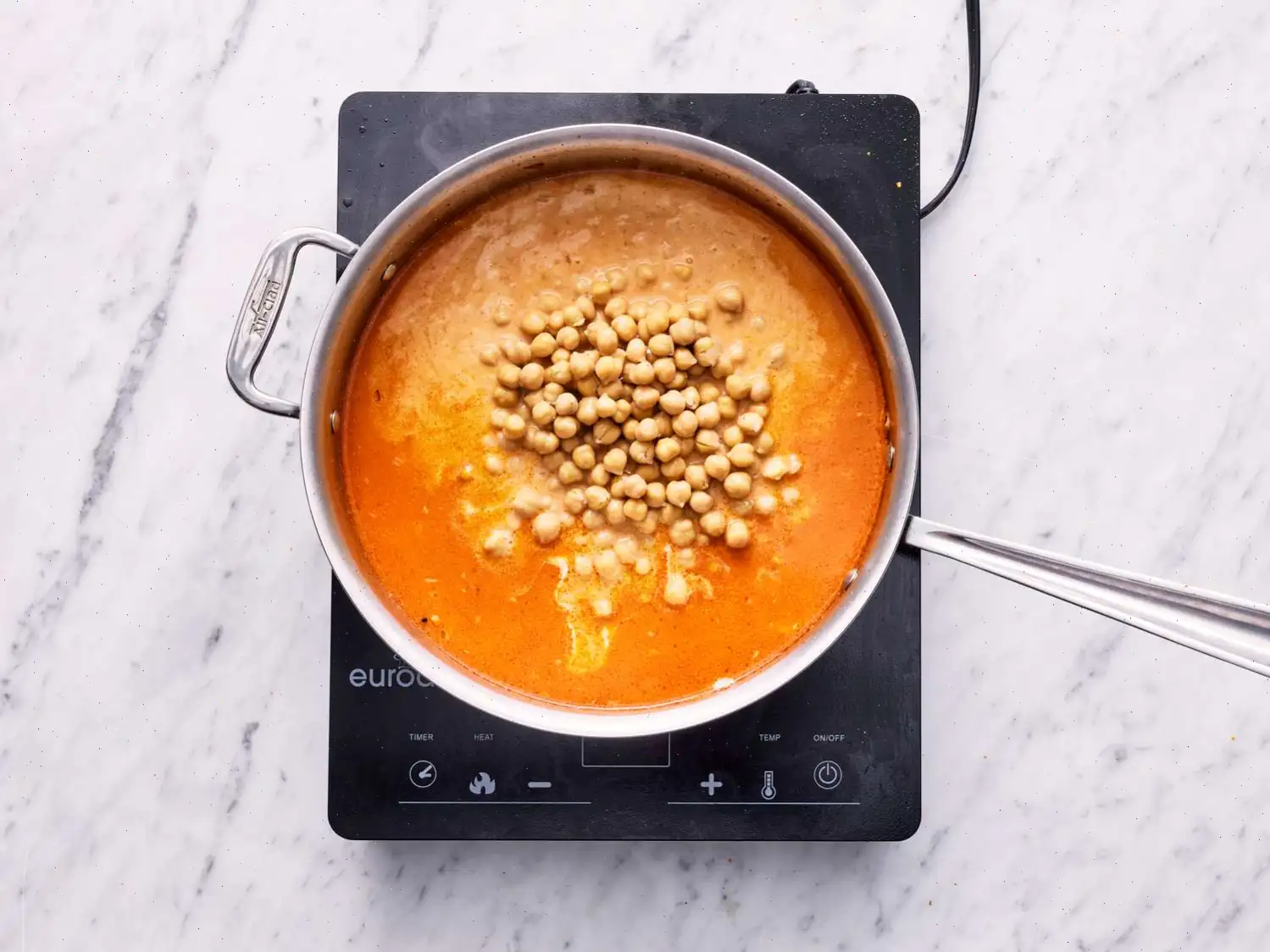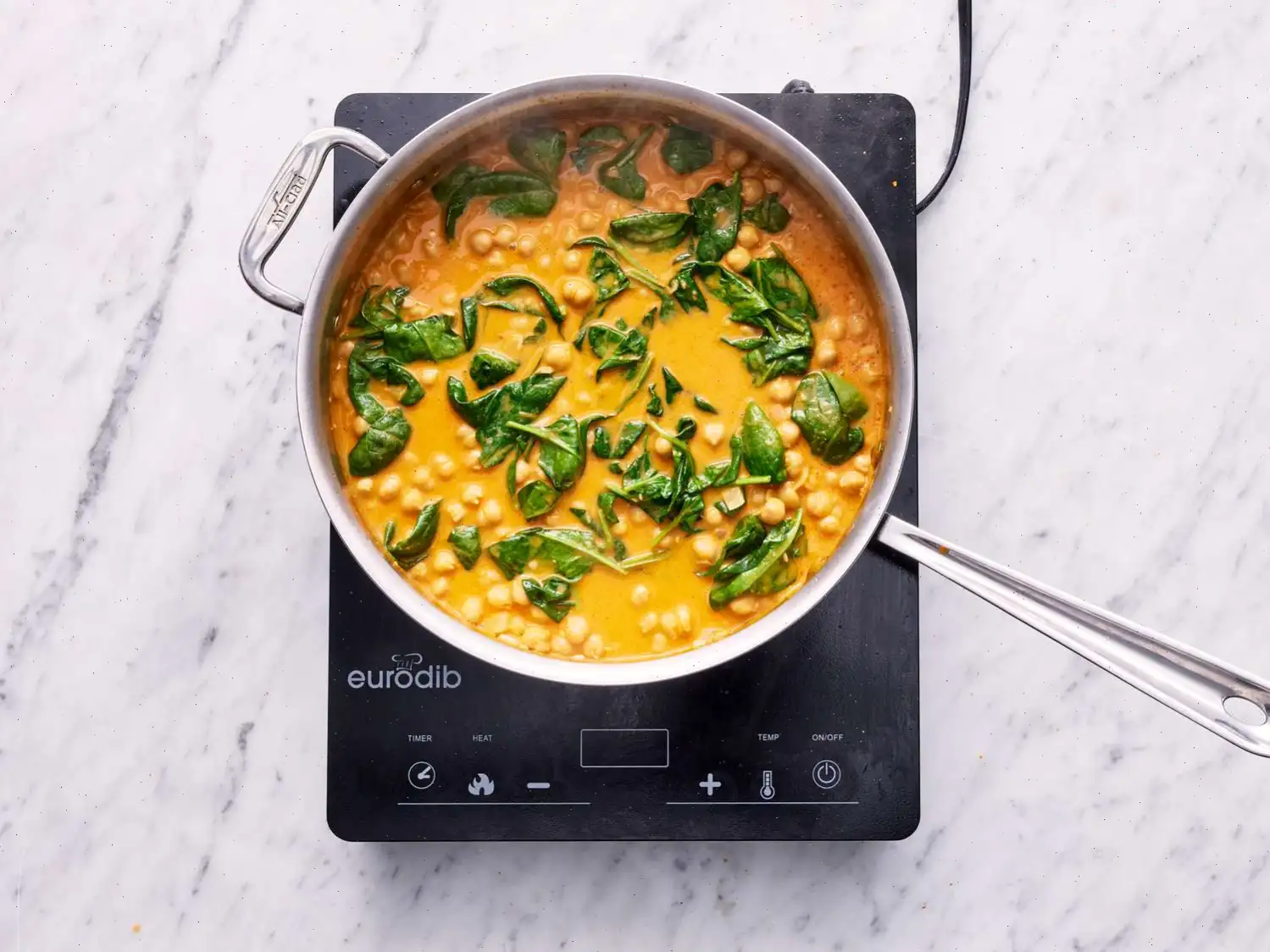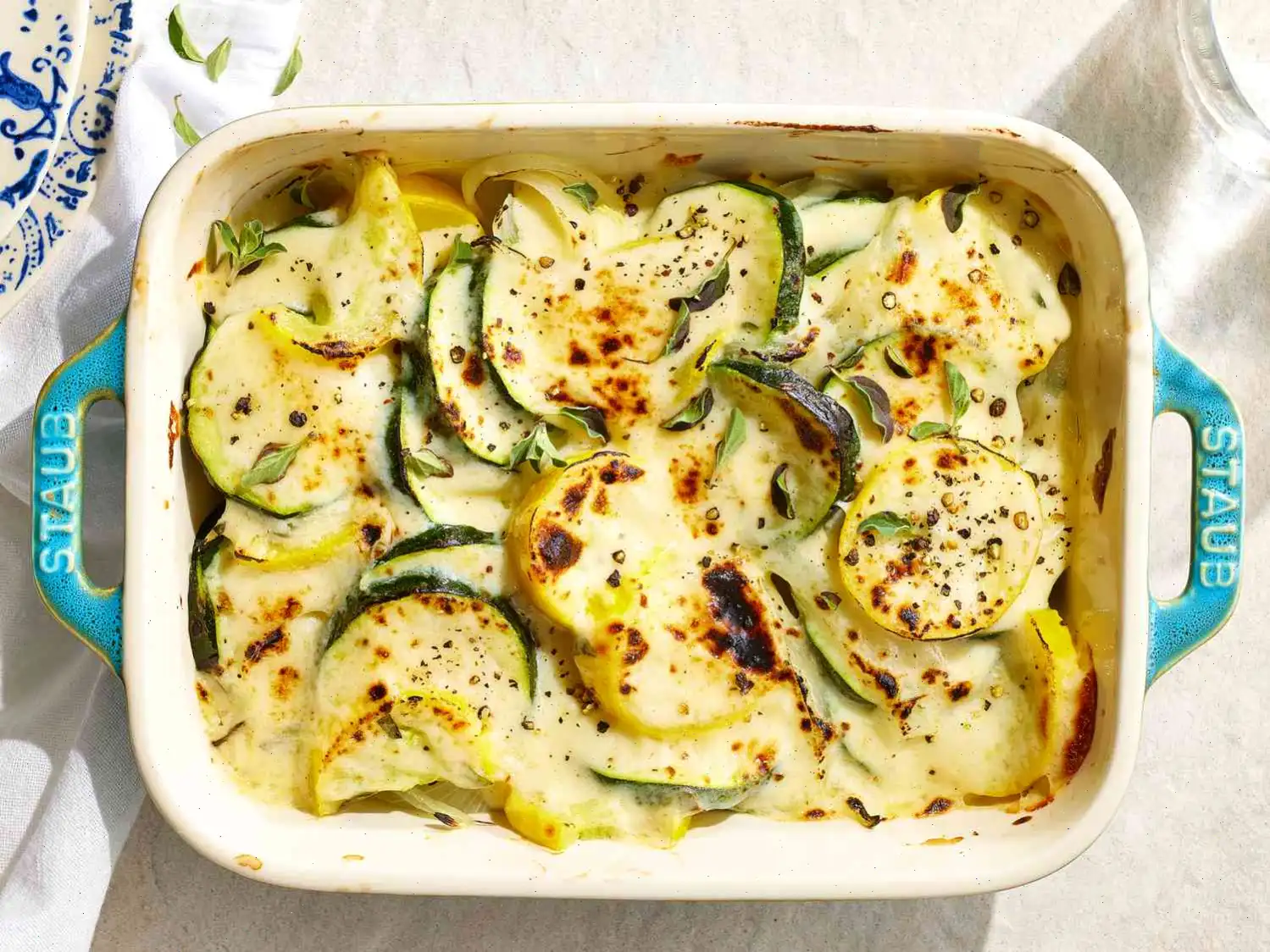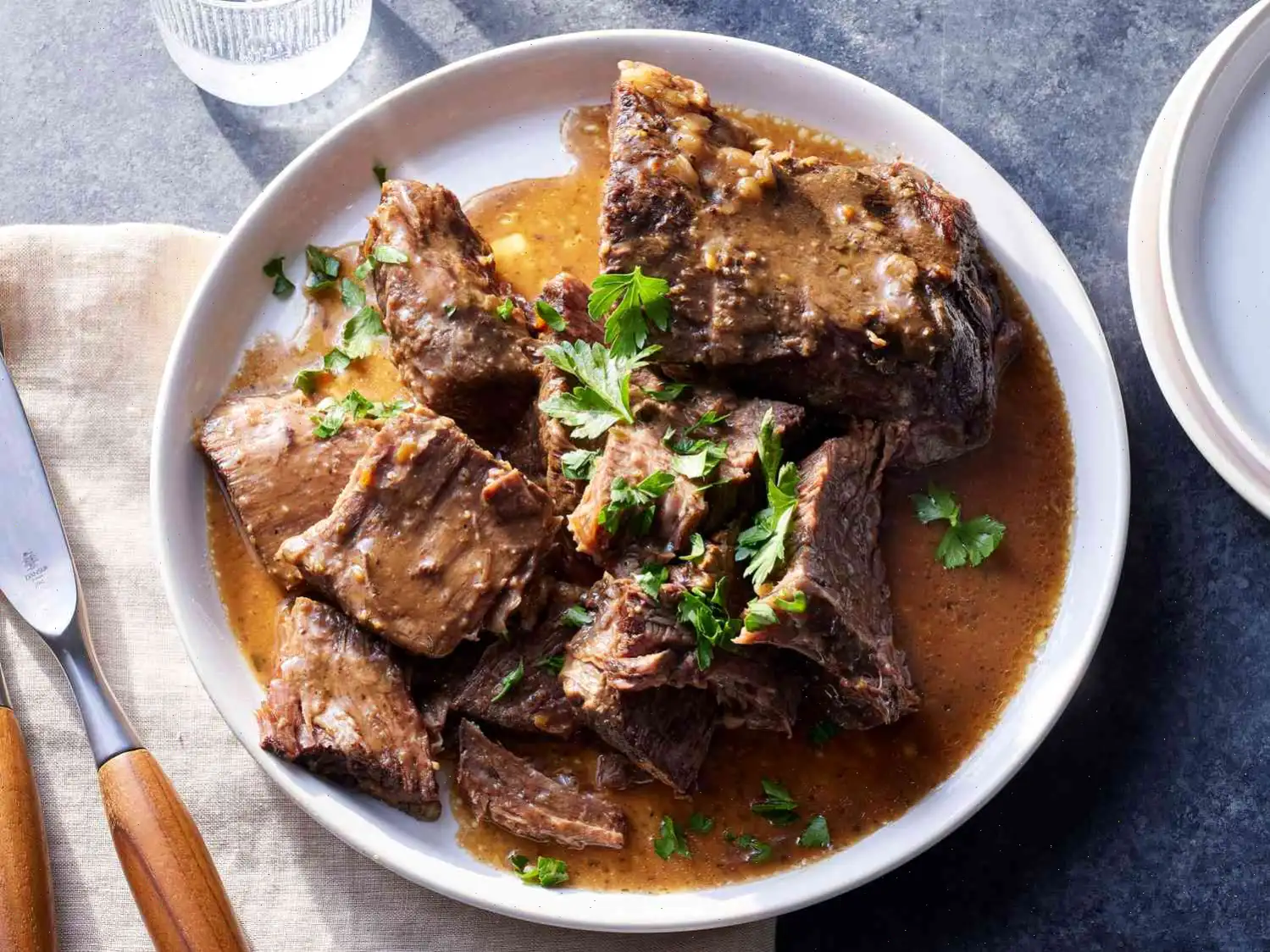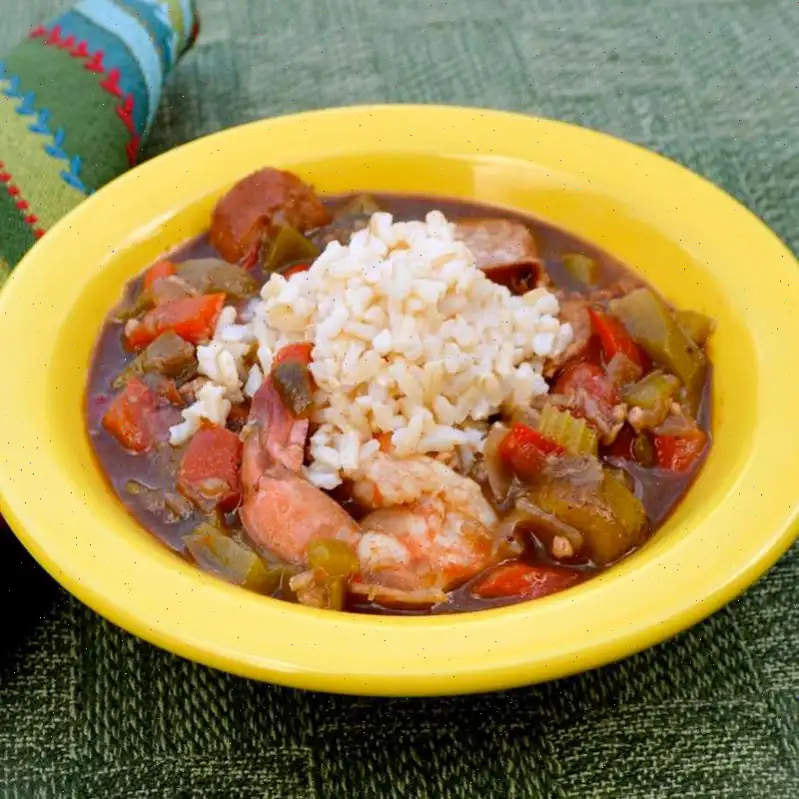
Coconut Chickpea Curry Recipe
Chickpea Coconut Curry
This vibrant, flavorful dish brings together the creamy richness of coconut milk and the earthy goodness of chickpeas, all spiced with aromatic Thai red curry paste. Perfect for a quick weeknight dinner, this recipe is both satisfying and packed with nutrients!
Ingredients
- 2 tablespoons grapeseed oil
- cup chopped yellow onion
- 1 tablespoon minced garlic
- 1 tablespoon grated fresh ginger
- 2 tablespoons Thai red curry paste
- 1 (13.5 ounce) can unsweetened coconut milk, well-shaken
- 1 cup vegetable broth
- teaspoon kosher salt
- 2 (15 ounce) cans chickpeas, rinsed and drained
- 3 cups baby spinach leaves
- 1 tablespoon fresh lime juice
- cup coarsely chopped toasted cashews
- Fresh cilantro for garnish
- 2 cups cooked rice
Directions
Step 1: Heat the grapeseed oil in a large, high-sided skillet over medium heat. Add the chopped onion and cook, stirring occasionally, until softened, about 4 minutes.
Step 2: Add the minced garlic and grated ginger to the skillet. Continue cooking and stirring for about 1 minute, until fragrant.
Step 3: Stir in the red curry paste and cook for another minute, stirring constantly, until the paste darkens slightly and coats the vegetables.
Step 4: Pour in the coconut milk, vegetable broth, and kosher salt. Bring the mixture to a boil over medium-high heat, stirring occasionally.
Step 5: Add the rinsed chickpeas to the skillet, then reduce the heat to medium. Simmer the curry for 15 to 20 minutes, stirring occasionally, until the sauce thickens slightly.
Step 6: Remove the skillet from heat and stir in the baby spinach. Stir until the spinach wilts, about 1 minute.
Step 7: Add the fresh lime juice to the curry, stirring to combine.
Step 8: Serve the curry over cooked rice, and top with toasted cashews and fresh cilantro for garnish.
Nutrition Facts (per serving)
- Calories: 480
- Total Fat: 40g (51% Daily Value)
- Saturated Fat: 21g (104% Daily Value)
- Sodium: 641mg (28% Daily Value)
- Total Carbohydrate: 37g (13% Daily Value)
- Dietary Fiber: 3g (11% Daily Value)
- Protein: 11g (21% Daily Value)
- Potassium: 505mg (11% Daily Value)
* Percent Daily Values are based on a 2,000-calorie diet. Your daily values may vary depending on your calorie needs.
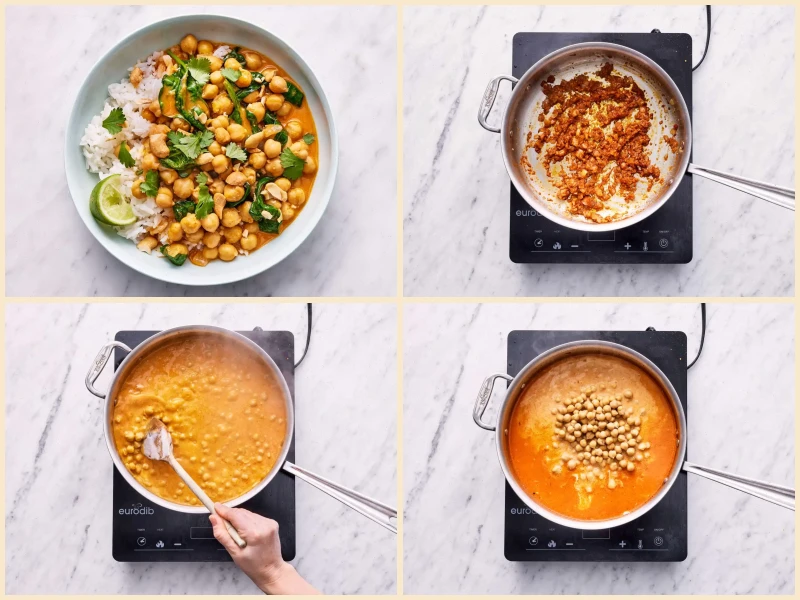
This Coconut Chickpea Curry recipe is a delightful and easy-to-make vegetarian dish that brings together the richness of coconut milk, the heartiness of chickpeas, and the aromatic spices of curry paste. But beyond its delicious taste, this dish has a fascinating history, regional variations, and some key differences from similar curries.
History of Coconut Chickpea Curry
The origins of coconut-based curries date back to Southeast Asia, where the use of coconut milk in cooking has been a long-standing tradition. In many South Asian and Southeast Asian cultures, curries have been part of the culinary fabric for centuries. The combination of chickpeas, a staple in Indian cuisine, with coconut milk reflects the fusion of flavors and techniques from the Indian subcontinent and Southeast Asia. This dish is particularly popular in vegetarian diets due to the rich, creamy texture of the coconut milk and the protein-packed chickpeas. While it might not be a specific traditional dish in any one country, the recipe has grown in popularity due to its vibrant flavors and ease of preparation.
Regional Features
While the basic ingredients of the Coconut Chickpea Curry are fairly consistent, different regions give this dish their unique twist. In India, where chickpeas (called "chole") are a significant part of the cuisine, coconut milk might be added to create a richer, milder curry. In Thailand, where the use of red curry paste is common, the curry tends to have a spicier kick, enhanced by lime and cilantro for a fresh, tangy finish. Coconut milk is also central to many Thai dishes, giving the curry a smooth, velvety texture. Other variations might include additional vegetables like potatoes, carrots, or even sweet potatoes, adding depth and sweetness to the dish.
How It Differs from Similar Dishes
What sets the Coconut Chickpea Curry apart from similar curries, such as the traditional Indian chole or the popular Thai red curry, is the balance of spiciness and creaminess. Indian chole, typically made with chickpeas, often uses a variety of spices like cumin, coriander, and garam masala, resulting in a more earthy flavor. In contrast, the Coconut Chickpea Curry is significantly milder, with coconut milk softening the heat of the curry paste and providing a creamy backdrop to the chickpeas. Thai red curry also uses coconut milk but is usually spicier and includes more pungent ingredients like lemongrass and kaffir lime leaves, which give it a fresher, more herbal profile. The inclusion of cashews and spinach in the Coconut Chickpea Curry adds a unique texture and nutritional boost, setting it apart from other variations.
Where It's Usually Served
Coconut Chickpea Curry is a versatile dish that is typically served in home kitchens and restaurants offering vegetarian or vegan cuisine. It is commonly served over steamed rice, which helps balance the richness of the curry. In South Asia and Southeast Asia, curry dishes like this one are often paired with flatbreads such as naan or roti. In the West, where coconut-based curries have become popular due to their vegan appeal, this dish is often found on restaurant menus that focus on plant-based and healthy eating. It's a great dish for meal prepping, as it can be stored in the fridge for several days without losing its flavor.
Interesting Facts About Coconut Chickpea Curry
Here are a few fun facts about Coconut Chickpea Curry:
- Coconut milk, a key ingredient in this curry, is not actually milk but the liquid extracted from grated coconut meat. Its rich in fats, making it a great source of energy.
- Chickpeas, also known as garbanzo beans, are one of the oldest cultivated crops, originating from the Middle East over 7,000 years ago.
- This curry is naturally vegan and gluten-free, making it accessible to people with dietary restrictions or those who follow a plant-based lifestyle.
- The dish has become a popular choice for people looking to eat more plant-based foods without sacrificing flavor or heartiness. Its filling, high in protein, and packed with healthy fats.
- Though traditionally eaten with rice, the curry can also be enjoyed with quinoa, couscous, or even as a side dish to grilled meats or fish.
Conclusion
Coconut Chickpea Curry is more than just a delicious meal; it is a dish that brings together the rich history of curry from multiple regions and cultures. Whether you enjoy it in its traditional form or with your own personal twist, its a dish that promises to satisfy your taste buds while offering a nutritious and filling meal. So the next time you're looking for a comforting yet exotic dish, this curry is sure to hit the spot!
FAQ about Coconut Chickpea Curry Recipe
Comments
Mark Robinson
05/06/2023 08:00:00 PM
Decent recipe but required some adjustments. I incorporated carrots and green beans, along with 1.5 tbsp of palm sugar and 1 tbsp of tamarind paste for a richer flavor profile. The whole family enjoyed it with these enhancements.
Nathan Anderson
04/29/2025 01:44:42 AM
Simple to prepare, delightful dinner. I followed the recipe closely, with the exception of using Asian greens and arugula instead of spinach. The combination of flavors created a rich and satisfying taste profile.
Robert Hill
12/30/2022 10:09:00 PM
Fantastic taste in this easy curry recipe. I didn't have grape seed oil, so I used coconut oil instead. Surprisingly, even my wife, who usually dislikes curry, liked this dish. Next time, I'll consider adding more curry paste to enhance the flavor further.


